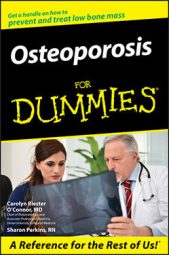You may not have thought much about osteoporosis — until you've fractured a bone. Exactly how fast the bone heals depends somewhat on the type of bone that's broken.
Bone consists of complicated living tissue of which there are two types, cortical and trabecular. Most bones contain both types of tissue:
Cortical (compact) bone is about four to six times denser than trabecular bone. About 75 to 80 percent of your skeleton is made of cortical bone. Cortical bone composes most of the shafts of long bones, like the femur in your thigh and the humerus in your arm.
Cortical bone heals in four to eight months.
Trabecular (spongy) bone is spongier than cortical bone and composes about 20 percent of the bones in your body. Trabecular bone appears at the ends of long bones and in the bones of the vertebrae (spine). Also, most short bones consist of trabecular tissue; your wrist and ankles contain short bones.
Trabecular bone heals within three to six months — more quickly than cortical bone — in part because of its better blood supply.
If you have a problem with low amounts of vitamin D in your blood or some other problem with vitamin D metabolism, it'll take much longer for your fracture to heal.

